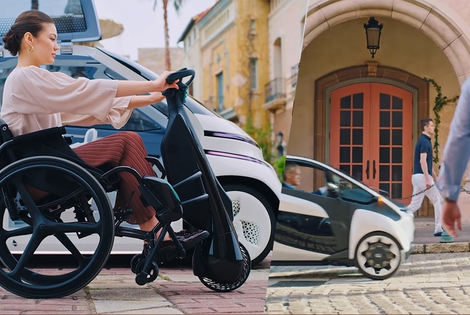
Milan has announced one of Europe’s most ambitious mobility schemes, known as Strade Aperte (open roads). Its goal is to reduce cars in phase 2 of the lockdown by increasing bike lanes and pedestrian areas.
Bikes perfectly match with solar power. Thanks to SolaRoad, Holland paved the way to solar cycle route. SolaRoad generates solar power through solar panels replacing tarmac and is proving to be more efficient than expected. “We didn’t “expect a yield as high as this so quickly,” said Sten de Wit, SolaRoad spokesman. Opened few months ago, the solar cycle route
Bikes perfectly match with solar power. Thanks to SolaRoad, Holland paved the way to solar cycle route. SolaRoad generates solar power through solar panels replacing tarmac and is proving to be more efficient than expected.
“We didn’t “expect a yield as high as this so quickly,” said Sten de Wit, SolaRoad spokesman. Opened few months ago, the solar cycle route has already generated over 3,000 kWh, as reported by De Wit: “This can provide a single-person household with electricity for a year, or power an electric scooter to drive of 2.5 times around the world. If we translate this to an annual yield, we expect more than the 70 kWh per square metre per year, which we predicted as an upper limit in the laboratory stage. We can therefore conclude that it was a successful first half year.”
Since its opening in November, over 150,ooo cyclists have crossed SolaRoad, which will still be a pilot project for the next 3 years at least.
The success of this solar cycle route resulted in pilot projects carried out in other provinces of the Netherlands. The province of North Holland even signed a cooperation agreement with California concerning SolaRoad project.
This agreement aims to reduce greenhouse gases and produce clean energy within 2050. Such objectives were set by California, which is one of the American states at the forefront of such topic. The agreement provides for an exchange of data, technologies and information also concerning other sectors of sustainable mobility, including electric mobility.
Siamo anche su WhatsApp. Segui il canale ufficiale LifeGate per restare aggiornata, aggiornato sulle ultime notizie e sulle nostre attività.
![]()
Quest'opera è distribuita con Licenza Creative Commons Attribuzione - Non commerciale - Non opere derivate 4.0 Internazionale.
Milan has announced one of Europe’s most ambitious mobility schemes, known as Strade Aperte (open roads). Its goal is to reduce cars in phase 2 of the lockdown by increasing bike lanes and pedestrian areas.
Formula 1, the world’s most important auto racing championship, has decided to turn the page and aim for carbon neutrality with the support of its teams, drivers and the whole racing circus.
Toyota and LifeGate began telling the story of hybrid mobility back in 2006, now, on the road to the Tokyo 2020 Olympics, they’re still treading the path of sustainable mobility. Here are the main steps of the journey.
Germany’s first solar bicycle lane could be the prototype for the roads of the future. The photovoltaic tiles melt snow and ice, and are capable of absorbing noise.
The Vespa is back in an electric version. Production has just started and the first models can be reserved online starting from October.
The city of Utrecht, in the Netherlands, is home to a bridge for cycling and walking that stretches over roof garden of a Montessori school. This project enhances practicality and will allow families to bring children to school by bike, passing through green areas. Despite their functionality, bridges are often seen as an infrastructure that is
The Lego hair bike helmet is the latest Internet craze. For now it’s just a prototype but production on a large scale will probably start soon.
Just as fires often give way to new growth, after the Dieselgate scandal, which saw Volkswagen cheating on US emission rules, the German car manufacturer radically changed course, beginning to focus on sustainable mobility. The German car company aims to propose thirty zero-emission models and produce at least one million battery electric vehicles by 2025. An ambitious mission
Sustainable, two-wheel mobility is triumphing in Copenhagen. After years of investments, policies, and infrastructural changes, bikes now outnumber cars in the city centre. The website Copenhagenize has released data linked to the number of vehicles entering the city centre, which are monitored by the city’s administration on a daily basis. Last year, 265,700 bikes have entered







